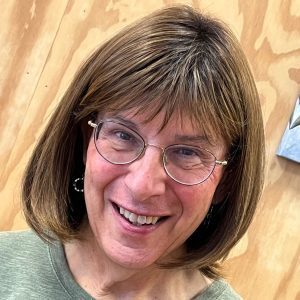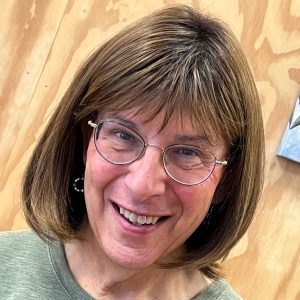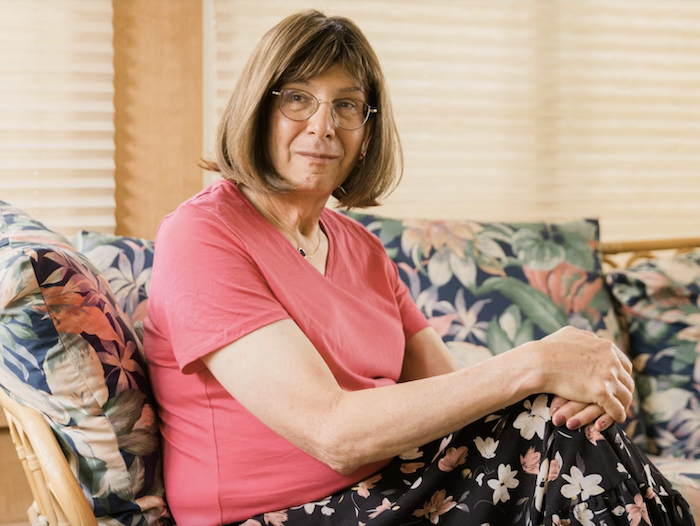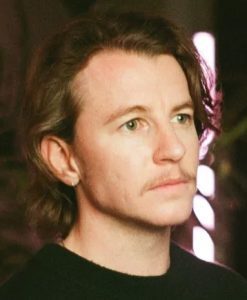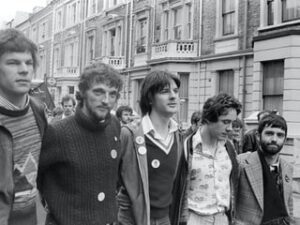Bernie Wagenblast grew up in Cranford, New Jersey and is best known for her broadcasting and voiceover careers. In 1979, about a year after graduating from Seton Hall University, she was hired as one of the original reporters for Shadow Traffic’s New York City office. She was heard on a number of stations including 1010 WINS and Musicradio 77 WABC. Traffic reporting proved to be her introduction to the world of transportation where she worked in both the public and private sectors. In the early 2000s she was asked to be the voice for the AirTrain at Newark Liberty International Airport. Shortly after, she was hired to be one of the voices of the New York City subway system. She also serves as the voice for PATCO in Philadelphia and South Jersey and is the telephone voice for PATH and the Port Authority of New York and New Jersey. Ms. Wagenblast serves as the editor of several transportation newsletters and host of two transportation podcasts. She also hosts Cranford Radio, a public service podcast for her hometown.
In late 2022, Ms. Wagenblast publicly announced she is transgender and that as of Jan. 1, 2023, she would be presenting to the world as a woman. Her story captured the interest of a number of media around the world and her story has been told in The New York Times, The Washington Post, NPR, the Associated Press and Reuters, among others. She’s also been featured in stories on Good Morning America and Inside Edition. International coverage has included the Canadian Broadcasting Corporation, the BBC, the Tokyo Broadcasting System and Dutch television.
TGForum (TGF): You came out as a woman a little over a year ago. But it was many years earlier that you felt you needed to make a change in your life. Why?
Ms. Wagenblast: I think it was a couple of things. It was the realization that I’m in the last half at best of my life and that mortality was staring at me. It made me feel that if I was going to do this, I had to do it now. I also felt that I did want to do this. I wanted to experience how I always felt before I left this earth. So, I think that was probably one of the biggest factors.
But I think it was also probably a buildup of years, because this is something I’ve known about myself from when I was a small child and from my earliest memories. It was something that was constantly on my mind, and I think that the pressure of it over all the decades definitely had an impact on me.
TGF: If I may ask how old are you now?
Ms. Wagenblast: 67.
TGF: Your transition was actually a slow process.
Ms. Wagenblast: It was January first of 2023 that I socially transitioned. I had begun the transition process very slowly and deliberately in 2017, But it wasn’t until the fall of 2022 that I finally made the decision that I was going to socially transition. Everything else that I had done prior to that was pretty much invisible to everybody. Legal changes. Some medical changes. I decided that January first was going to be the date that I would start living my life full time. That is how I always have felt about myself prior to that. I put a coming out note on social media a few days before that date. Of course, before that I had told many people like family, friends, and colleagues. I let them all know, but this was the announcement to the rest of the world at the end of December 2022.
TGF: What was that expectance experience like for you?
Ms. Wagenblast: It was far better than I thought it would be. I have had great support from neighbors, my community and colleagues in broadcasting and transportation. There have been very few negative reactions.
I think some of that is due to the privilege that I’ve had. The fact that I was able to build a reputation for myself. Decades of work and community involvement. I think that made a big difference, obviously going along with that was financial resources. I was in a financially secure place when I transitioned. I think that made a difference. There were a lot of factors. I think that I had going in my favor, and of course I can’t discount the area that I live in. It’s generally an accepting part of the country, and the community itself is very accepting. So, all of that, I think, played into it.
TGF: Today there are so many large proponents of women in business and the media industry. When you started working in the media it was primarily a man’s world.
Ms. Wagenblast: Oh yes, most definitely. I first got involved in the field in the mid-1970s. It was definitely very much a man’s world. There were women, but you almost got the impression that it was done so a company could say, yes, we have a woman on our staff. But they were certainly a significant minority of the other broadcasters that I worked with.
TGF: It would be difficult making a transition if you were still in Indiana.
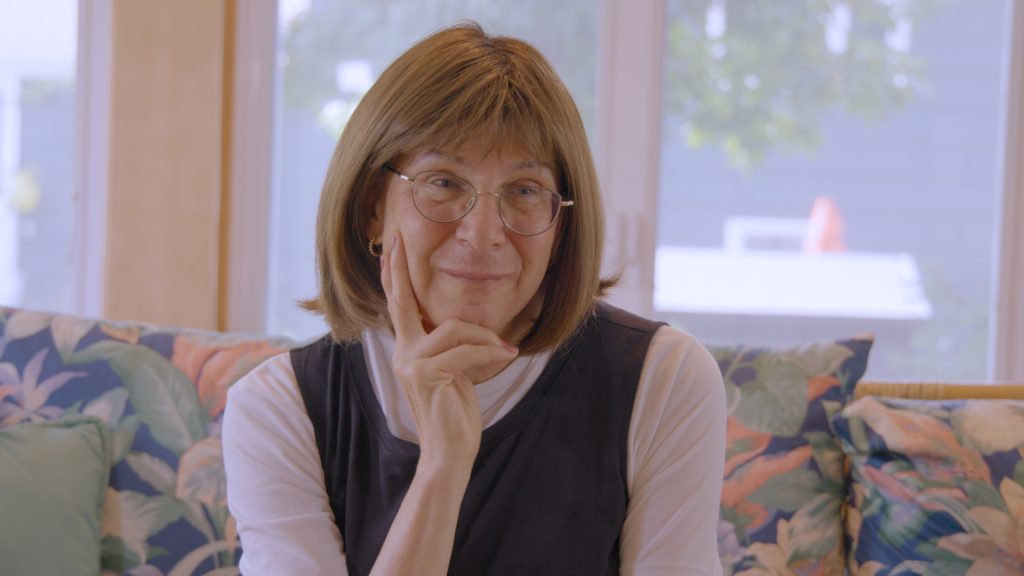 Ms. Wagenblast: That’s true. I was only in Indiana though for about six months and that was in the late 1970s. Indiana was different then, and I was different then. So, I came back to New Jersey. I’ve lived in New Jersey for every part of my life, except for those six months when I was working at a radio station just across the river from Louisville, and maybe that would have made it a little bit easier because it was an urbanized area. Cities, even in red States, tend to be more accepting than perhaps some of the rural areas. I don’t know what it could have been like. But one thing I can tell you, with my transportation work, I do podcasts and I’ve interviewed officials from all across the country since I’ve come out and not once have I had any pushback from those officials. I count that as a bit of a victory too.
Ms. Wagenblast: That’s true. I was only in Indiana though for about six months and that was in the late 1970s. Indiana was different then, and I was different then. So, I came back to New Jersey. I’ve lived in New Jersey for every part of my life, except for those six months when I was working at a radio station just across the river from Louisville, and maybe that would have made it a little bit easier because it was an urbanized area. Cities, even in red States, tend to be more accepting than perhaps some of the rural areas. I don’t know what it could have been like. But one thing I can tell you, with my transportation work, I do podcasts and I’ve interviewed officials from all across the country since I’ve come out and not once have I had any pushback from those officials. I count that as a bit of a victory too.
TGF: After Indiana you came back east to New York and WABC with WINS radio stations. You were doing traffic reports. How did that come about?
Ms. Wagenblast: It was probably one of the biggest breaks I’ve ever had in my career. When I came back from that Indiana experience, I was unemployed. I had accepted a job at a small radio station in New Jersey. But before I started, I was contacted by a new company that was coming to New York called Shadow Traffic. They started in Philadelphia. They had grown into the Chicago media market, and New York was going to be the third city. New York is the largest communications broadcast market in the country. They reached out to some New Jersey universities, and asked if they had any recommendations for either older students or recent graduates that might be candidates to be traffic reporters when they were starting up in New York. Fortunately, I was one of the names on the list that was submitted. I went in for an audition and it wasn’t just speaking ability that they were looking for. It was how well you knew the geography and the roads of the TriState area. I’ve always been into maps, and I love that. I passed that test and was hired as one of the original on-air reporters.
The reason I say it was the biggest break that I ever had in my career was because I was 23 years old and unbelievably I was on the air, not only in New York City, the number one media market, but on the air during drive time which is when the most listeners are tuned into radio, especially back then. This is long before streaming and podcasting and everything else. Radio is pretty much where people tuned to get information and listen to music and things of that nature, and I was on two big stations. It was great exposure and an opportunity that I couldn’t have imagined otherwise.
TGF: My hat is off to you, if you know New Jersey, because that’s a tough state to drive in. At least it is for me.
Ms. Wagenblast: It is difficult, but fortunately from the day I got my driver’s license I wanted to explore. So, I was driving around and wondered where does this road go? I had my Hagstrom maps that I would look at and figure things out. I’ve always been a bit of an explorer when it comes to that.
TGF: When did transportation radio enter the picture?
Ms. Wagenblast: That wasn’t until 2014. When I was a student in college. I always thought it would have been fascinating to have been involved with television in the 1950s when it started, or when radio began in the 1920s and 30s. To be on the bottom floor of a new media would have been exciting. But I wasn’t born then, so that opportunity was never going to come about. But in the 1990s, the internet came along, and I embraced it and started doing some things online. In 1996, I started a newsletter called the Transportation Communications Newsletter that I still do 25-plus years later. It was just a rundown of news items involving communications in the transportation field. I’ve done other transportation newsletters for different clients about various facets of transportation, but in 2014, I thought maybe I should try my hand at podcasting because it was closely related to skills that I had used as a radio journalist. In fact, it used some things that I had not utilized since my college days in terms of long-form interviews and editing among other things. I decided that I was going to do two different types of podcasts, one about transportation and one for my hometown of Cranford, New Jersey. The transportation interviews came first. I was just doing it for the experience and for the exposure and interviewing various people. Around 2017, one of my newsletter clients asked if I would be interested in doing a podcast for them. Of course, I said yes, it sounds like a lot of fun. So now I do two monthly podcasts for two different transportation clients. It’s marketed and branded as their podcast, but I also share it on my transportation radio website. It’s a great way to use some of those radio skills.
I admit I have a bias toward audio. I think audio, when done well, can be a very effective medium. It’s often a one-on-one medium where you’re talking to somebody and the listener hears it on their headphones while they’re exercising, or in their vehicle while they’re driving or commuting. I thought, why not use some of those skills and put it to good use. It’s a very warm medium if you do it well, and I’ve enjoyed that.
TGF: But Bernie, you don’t have a face for radio.
Ms. Wagenblast: Thank you for that compliment.
TGF: When I saw transportation radio during my research about you, I had to make sure transportation radio wasn’t a play on words because of your lifestyle.
Ms. Wagenblast: No, no. Not only that, but I also work in mass transit, which is transportation. Two of the organizations that I’ve worked for in my career was Transcom and the other was called Transcor, and both are in transportation. They both just happen to have trans as part of their names. I look at it as the universe has a sense of humor.
TGF: I love that. Quite ironic. Now you are the voice in the New York City subway system.
Ms. Wagenblast: I’m one of the voices of the New York City subway. There are other people who also lend their voice. The place that people hear me right now is in the subway stations of the numbered lines. I’m also heard on the numbered line trains and the Times Square shuttle. If you go on the L or D train, you won’t hear me. I’m the voice that tells them how long it will be before their train is arriving at the station, and I warn them to please stand away from the platform edge. That is what I’m best known for when it comes to the subway.
TGF: How long have you been doing that?
Ms. Wagenblast: Since 2009. I did the recordings and they started rolling them out about a year later.
TGF: Do people know who’s making the announcements? You are a local celebrity because of that.
Ms. Wagenblast: People certainly know the voice, because even before I transitioned, if I was speaking to a class or group, I would go into the subway voice, which is a bit different than even my guy voice is. It’s a little more enunciated and sounds different. There would always be laughs and applause as people recognized it because they never thought they would see the person that that did the subway voice.
In the past year I’ve done a lot of media interviews, and that’s meant pictures and video. So now, for the first time ever in my career, people are recognizing me on the street or on the subway, and will ask, aren’t you the voice of the subway? That has been a much newer experience to have people recognize me and ask for selfies and things like that. It’s been fun.
TGF: I bet it is. But with all the things going on in your life and in the world, what are your feelings about the state of affairs facing the trans community. Not only in New York, but the U.S. too.
Ms. Wagenblast: First of all, it makes me very sad when I see what is going on. It’s disappointing. I think it is politicians primarily driven by politicians who are looking for an easy way to rile up their base and to get support. Even before I planned to socially transition, I decided that I was going to come out and tell people that I was trans. I felt it was very important for representation to be there and I think that is a key I’ve thought back to. I was working for the Port Authority of New York in New Jersey in the 1980s. I had colleagues who were gay, but it was a don’t ask, don’t tell situation. It was never discussed. That was during the AIDS crisis, and I looked at what had changed from that time when people felt that they, even in New York, couldn’t as easily be public with who they were and how far we had come in the 21st century where gay marriage was in place, and there seemed to be much greater support for gay people. I felt one of the big factors in that growing acceptance was that people started to see gay people whether it was a work colleague, a neighbor, or maybe someone in their family. Foolish. And when you see somebody, and you know somebody, it changes your viewpoint. It changes that stereotype that maybe is embedded in your brain from things you have read or heard and realize that these are real people. I felt that that it was very important for me, as a trans person to be seen as a real person, to use whatever platform and notoriety I already had through my years on the radio. And being a transit voice to raise that visibility just a little more, particularly with the people that I know. I think that does make a difference, because it’s a lot more difficult to hate someone you know than it is to hate a stereotype of something that you don’t know.
TGF: What do you value most in your day-to-day.
Ms. Wagenblast: It’s hard to pick one thing that I value the most. Of course, family. I’ve got three adult daughters and seven grandkids. That is certainly something that I value. My health, and wellbeing. Financially stable friendships. Friendships have become much more important since I transitioned because they provide that social network that I need and that has been wonderful to have support particularly from female friends. I may have always felt female, but I only have a year and three months’ worth of experience of being a woman and there’s a lot to learn. My female friends have helped me to learn some of the things that I needed to understand, like clothing and hair. I don’t want to make it just those very superficial things. Just being in the company of other women has made me feel quite comfortable, and not awkward. Any awkwardness that I felt, I think, has been self-imposed, particularly in that first year. I was commenting to somebody recently that the first year, in some ways, was the most difficult because it was filled with firsts. Not that there won’t be additional firsts in my life, but a lot of the things that I had been previously doing I did for the first time as a woman or being seen as a woman by others this past year. And now I feel more comfortable that I’ve gone through those situations successfully, and the world did not blow up from some event that I was involved with.
TGF: Very good. If you could wave a magic wand and make a change in the world or in your surrounding community what do you think that would be?
Ms. Wagenblast: Boy, that’s a lot of power. I think I would like to with that magic wand is build understanding. Not even necessarily 100% acceptance, because I don’t think anything is 100% accepted in this world. But with greater understanding comes a lessening of hate. To me hate is the most dangerous. I can deal with somebody who doesn’t fully agree with the choices that I’ve made. If, as they see it, they understand it is a choice. But I can’t in any way, shape, or form agree with hate. There’s no place for that. That’s what I would like to see changed, to have the hate go away. We can have disagreements on things, but I don’t want to see all the hate persist.
TGF: Thank you for sharing those feelings. Anything you’d like to add about what we’ve talked about or didn’t talk about.
Ms. Wagenblast: I think one of the things I would add is something I’ve heard others say about trans people. I’ve heard it this first year, and feel strongly about it and the best way to put it is that trans people are so much more than just being trans. That’s just one facet of who we are. If somebody were to come up to me and say, “Who are you?” I would start off with I’m a parent, grandparent, transportation journalist, and a voice actor. Being trans is just one facet of who I am. I have hazel eyes, or I’m 5 foot 10, but still, it’s just one descriptor of who I am. I think it gives me a different perspective than most people have in their life. Living in two different genders is a unique opportunity that most people don’t have and one that I’m thankful for. But I think one of the key things is that we are so much more than just being trans. That’s just a part of who we are.
TGF: Thank you. It has been awesome speaking with you, as I thought it would be based on my research.
Ms. Wagenblast: Likewise, Shelley.
Related
Category: Interview

